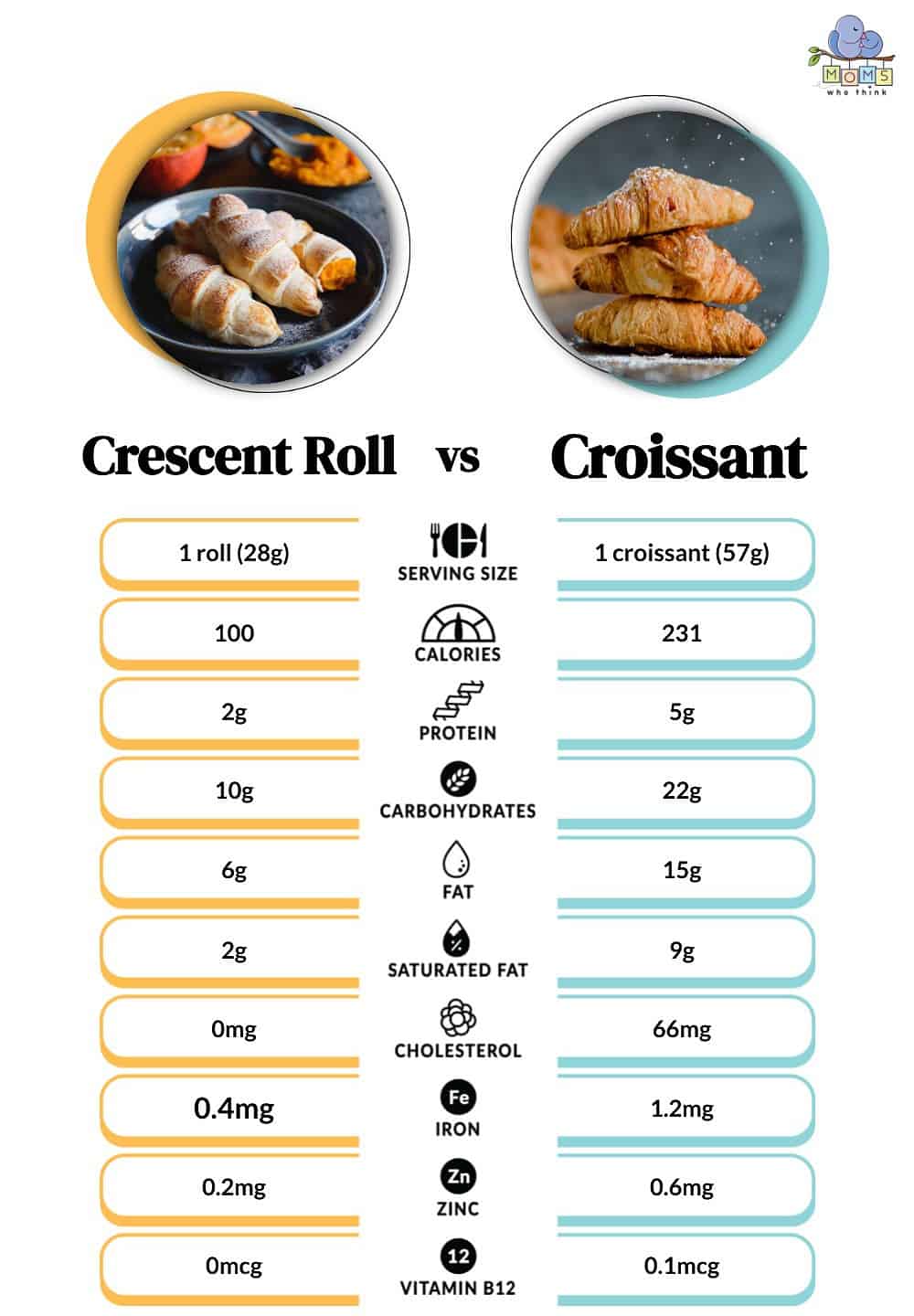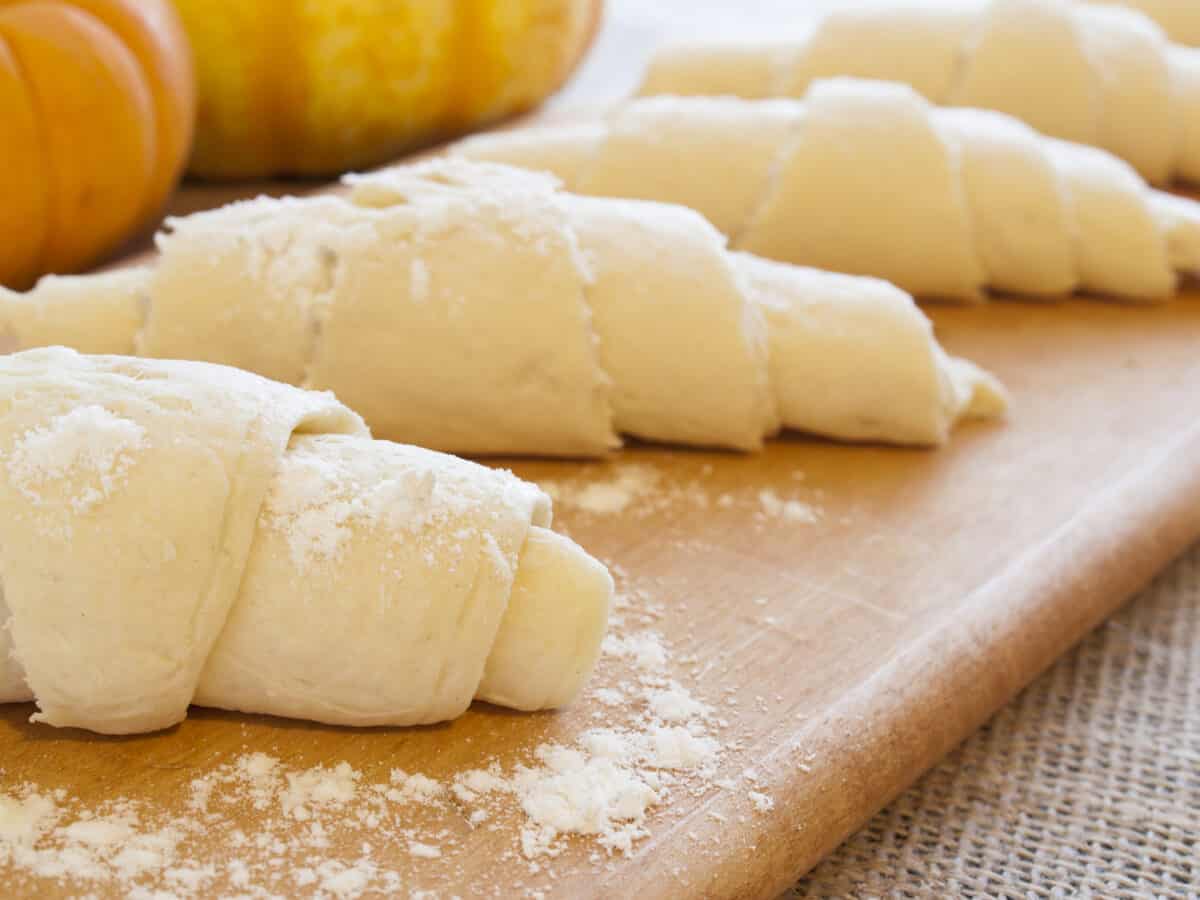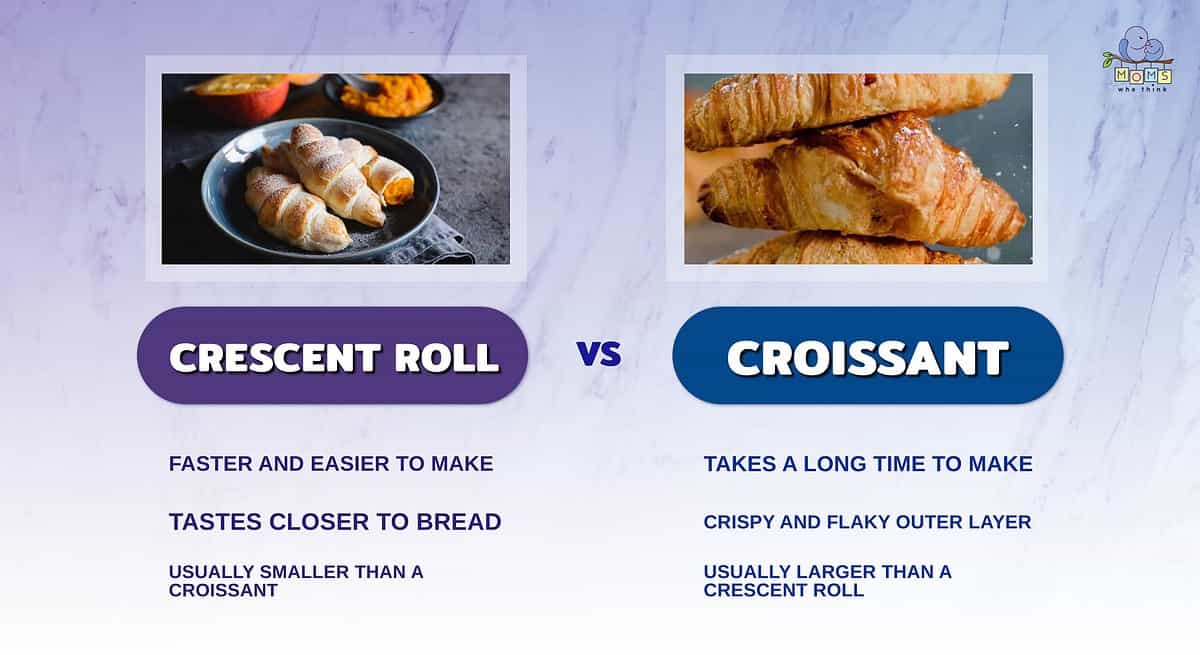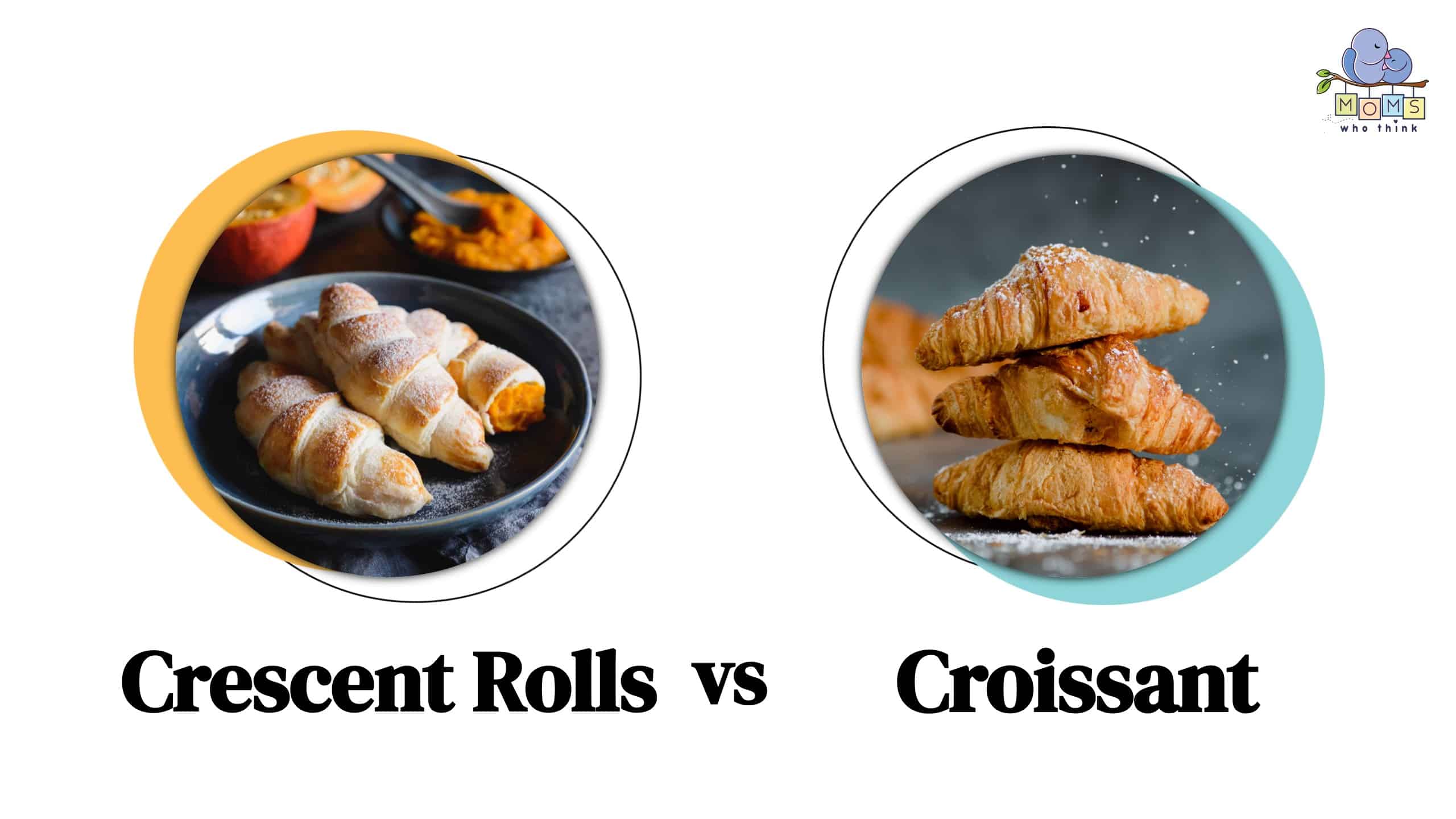When it comes down to warm bread to satisfy your cravings, crescent rolls and croissants are delicious options! The half-moon shape of both means many people mix them up. Although they are similar in appearance, crescent rolls and croissants have subtle differences in flavor, history, and ingredients. We will discuss all of those in this post. However, perhaps the most important difference is in the preparation method of each. A croissant takes a longer and more in-depth approach to prepare. The process is called lamination. Lamination is when one folds butter into the dough over and over. This method creates the beautiful and flaky layers that are a key part of the croissant.
Crescent Rolls vs. Croissants: The Main Differences
We touched on the main difference between crescent rolls and croissants. However, let's go into a little more detail. Croissants and crescent rolls have very similar appearances; their names even mean the same thing! After all, the word croissant translates as a crescent in French. Yet, there are many subtle differences between the two.
The lamination process produces a crisp and flaky outer layer on the croissant. Since the outer layer is so crisp and flaky, they are a pastry.
The crescent roll, however, forgoes the laminating process. After baking, the result is a beautiful roll that more closely tastes like typical bread. This makes crescent rolls excellent choices as a side during a hearty meal.
Aside from the laminating process, there are more differences. Let's explore each one below.
Nutritional Profile
When it comes to the nutritional profile of crescent rolls and croissants, they are both high in calories. Also, since they both have a flour base, they are higher in carbohydrates. Regarding the comparison between them, croissants are higher in most of the nutritional values. It beats out crescent rolls in calories, carbohydrates, proteins, fat, cholesterol, and more. Take a look below at the nutritional comparison between the two.

©
Main Ingredients
The ingredients vary only slightly when making crescent rolls and croissants. They both use the following ingredients:
- Butter
- Sugar
- Yeast
- Milk
- Salt
- Flour
One difference between the ingredients of the two is that many recipes use eggs in the dough for crescent rolls.
Do you ever wonder how rolls get their beautiful, crisp, brown outer layer? It is due to using an egg wash, which is brushing raw egg on the outer side of the dough before baking.
Both crescent rolls and croissants use an egg wash.
Preparation
The process of making a croissant is much more time-consuming than crescent rolls. The work is worth it, though! One of the main factors in making the perfect croissant dough is to remember always to keep it cold.
Using cold milk with the yeast is key. After forming the dough, it sits in the refrigerator for at least 30 minutes and then again overnight after rolling it out.
The next day the dough goes through the laminating process, then it undergoes chilling again overnight.
On the other hand, the process of making crescent rolls is much less time-consuming. The dough does not have to sit in the fridge for extended amounts of time, however, it still does spend time in the refrigerator, just not as long. Instead, you can make crescent roll dough in one day and have delicious rolls for dinner that night.
Crescent roll dough does not have to be cold, unlike croissant dough. In fact, the dough needs to be warm temperature. This is why the yeast is activated with warm milk and room-temperature butter.
The preparation process of both of these doughs is what contributes to the end results!

©MaraZe/Shutterstock.com
If They Look Alike, Aren't They the Same?
The appearance of the crescent roll and croissants is one characteristic that contributes to the confusion. They are both crescent-shaped!
However, did you know that croissants aren't always crescent-shaped? In France, a straight croissant is called an croissant au beurre.
Another difference between crescent rolls and croissants lies in their flakiness. While crescent rolls taste a bit flaky as well, the flakiness appearance is more noticeable in croissants.
Croissants also tend to be larger than crescent rolls.
Texture and Flavor
Croissants have an apparent and subtle sweetness to them. One of the reasons for this can be traced back to the butter folded into the dough in the lamination process.
Crescent rolls do not carry a sweet undertone like croissants. However, they both share the same buttery flavor.
What are Crescent Rolls?
Crescent rolls are crescent-shaped rolls that are flaky on the outside and soft on the inside. They are similar to croissants, yet the preparation methods are different.
The smooth texture of a crescent roll puts it in the bread category. They are great as a side for dinner or breakfast. Crescent rolls can also be stuffed. This is best done by stuffing the crescent roll and then baking them. A kid's favorite is pigs-in-a-blanket!
Crescent rolls do not have a magical beginning. Many believe they are simply a different take on the croissant. This is one reason why the two interchange names!
The canned crescent rolls that are at the grocery store came on the scene in 1965. Pillsbury Doughboy introduced this delicious pre-made product, and as the saying goes, the rest is history.

©Arina P Habich/Shutterstock.com
What is a Croissant?
Croissants trace their history back to the 1300s. They are descended from the Kipferl, popular in Vienna at the time. Not surprisingly, the name Kipferl is German for crescent. For centuries the Kipferl used a particular dough to make the popular rolls. This all changed in the 17th century. The crescent shape was born after Vienna gained victory during the Turkish invasion. They baked these crescent-shaped croissant rolls to celebrate and, for symbolism, to represent defeating the Ottoman Empire.
Wait, croissants are French, aren't they? Well, technically, their beginning is not French. Their popularity grew, however, in Paris during the 1800s. This is one reason why the origins of the croissant are traced back to France. However, France is just a pit stop on the long journey through the rich history of the croissant.
Croissants are a delicious pastry on their own or as a side.

©LuciaR/Shutterstock.com
In Conclusion

- A crescent roll is much faster and easier to make than a croissant. If you want to try your hand at making croissants, it's important to give yourself adequate time to do so. This is especially true if you're new to baking.
- Croissants have a crispy and flaky outer layer, giving them a texture that mixes crunchy and soft. Crescent rolls are similar to bread in terms of texture and taste.
- Crescent rolls tend to be smaller than croissants.
If you love nothing more than a sweet, delicious pastry or carbohydrate, either one of these delectable rolls is a great choice. It is relatively easy to mix the two up. After all, their crescent shape and golden brown color make it easy to do! However, despite their apparent similarities, crescent rolls and croissants have subtle differences.
The Main Difference Lies in the Preparation Methods
Both of them take effort and time. However, the croissant dough is more time-consuming to prepare. Secondly, croissant dough should be kept cold at all times! This will give you the flaky outer layer and the sweet undertone that is so prevalent in these fantastic pastries.
Crescent roll dough, on the other hand, is made with warm ingredients. Although it is also flaky, the texture tends to be smoother than a croissant.
Both crescent rolls and croissants can be stuffed with unique and delicious ingredients! Here are some popular items to stuff a croissant with:
- Ricotta cheese
- Whipped cream
- Peanut Butter
- Fruit, like bananas
- Jam
- Berries
- Honey
- Chocolate
- Pastry cream
- Bacon
- Eggs
- Chicken
- Pepperoni
Crescent rolls are also delicious when stuffed. Here are some great ingredients for your next crescent roll meal:
- Hotdogs
- mini sausages
- Cinnamon
- Eggs and bacon
- Cheese
- Cream cheese
Regardless of what you stuff your croissant or crescent rolls with or if you just eat them plain, they are both delicious!
Crescent Roll Recipes
Print
Pumpkin Crescent Rolls
- Total Time: 17 minutes
Ingredients
- 1 (8 ounce) package cream cheese, softened
- 1 (15 ounce) can pumpkin
- 1 (14 ounce) can Sweetened Condensed Milk (NOT evaporated milk)
- 2 Tablespoons flour
- 2 Tablespoons cinnamon
- 1 teaspoon pumpkin pie spice
- 1 cup pecans, finely chopped
- 4 (8 ounce) packages refrigerated crescent rolls
- 1/2 cup granulated sugar
Instructions
- Preheat oven to 375 degrees F. Lightly spray baking sheets.
- In a mixer bowl, blend cream cheese, pumpkin, condensed milk, flour and spices until combined and smooth.
- Unroll crescent rolls, separate and lay flat. Evenly spread 1½ Tablespoons of pumpkin mixture over the uncooked dough.
- Sprinkle 1 teaspoon chopped nuts over the pumpkin layer then roll into the crescent shape. Sprinkle the tops of the rolls with granulated sugar.
- Bake 11 to 13 minutes or until slightly golden brown.
- Prep Time: 5 minutes
- Cook Time: 12 minutes
- Chicken Cheese Crescent Rolls Recipe
- Cheesy Crescent Mozzarella Wedges Recipe
- Flaky Apple Dumplings
- Chicken and Broccoli Braid Recipe


